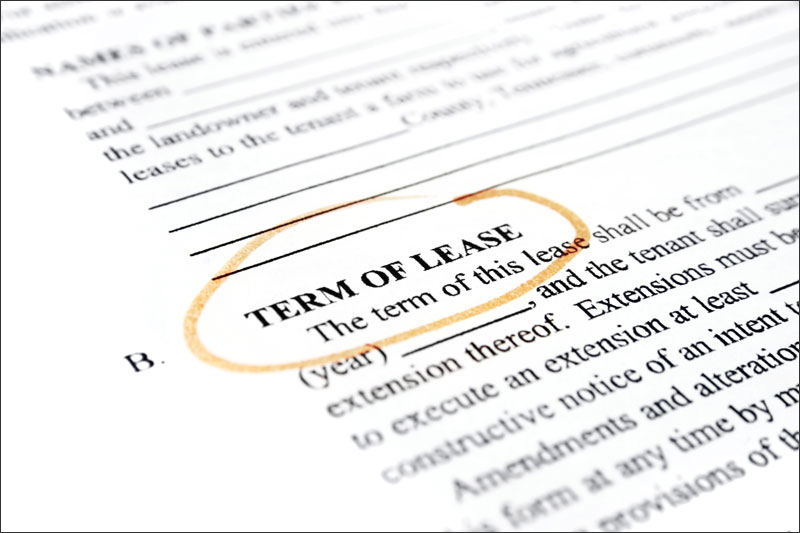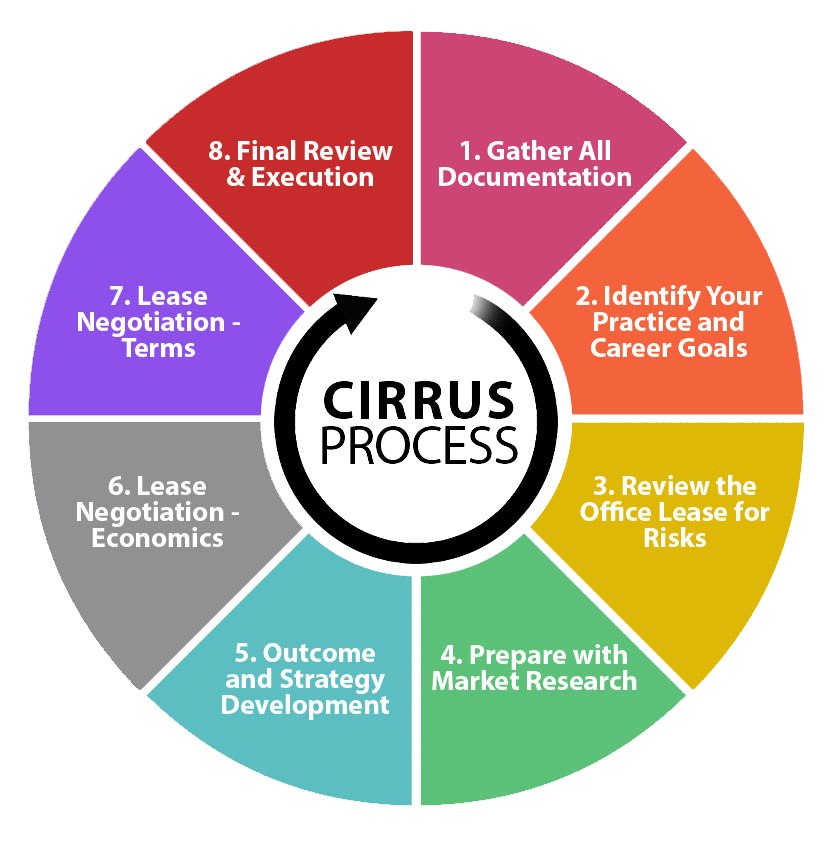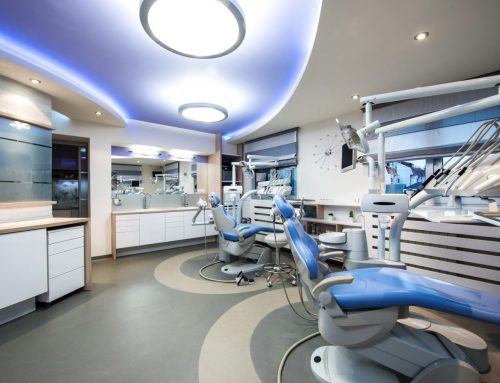One of the largest expenses in a dental practice is the office rent.
Landlords strive to increase the value of their properties by enforcing clauses in the dental office lease that enable them to raise rent, threaten their dental tenants with eviction, or prevent them from selling their practices. The dental office lease should act as a tool to protect and support the success of a practice; not the opposite.
The following is an overview of Cirrus’ tried and tested “8 Step Strategic Dental Office Lease Negotiation Process”, designed and developed over 20 years to help dentists secure the best deal possible, with fair and economic lease terms that prevent landlords from gaining an unfair advantage.
Step 1: Gather and Assemble the Dental Lease Documentation
Collect all the relevant lease documentation ahead of time to ensure you have all the information and necessary facts in one place for a full understanding of the big picture.
Step 2: Identify Your Practice and Career Goals
Determine your long-term goals, and how they relate to your tenancy. What stage are you currently at in your career? Are you planning to retire from dentistry in the next 5-10 years? Do you have practice expansion plans in the future? Do you plan to bring in associates? Are you going to branch out and offer alternative forms of dentistry to your patients? Mapping out your needs and goals in advance will help you determine how your lease should look, and what you need it to do for you, shaping your lease negotiation strategy.
Step 3: Review the Lease for Risks
Once you’ve defined your goals, it’s time to critically review the dental office lease from start to finish, identifying any problem areas or risks within. Language in the lease is often difficult to understand and written in the landlord’s favor, presenting multiple road blocks to dentists at pivotal stages in their career.
Items to Consider in the Lease:
Once these and other hidden risks have been identified, it’s time to prepare an office lease negotiation strategy to improve or remove them altogether. Develop a strategy to either eliminate or amend these clauses, and be ready with “preferred alternatives” in case your landlord is unwilling to budge.
Step 4: Prepare with Market Research
Understanding and educating yourself on the market and conditions in and around your practice is a surefire way to prepare for your negotiation. Being aware of existing competition, rental rates in your neighborhood, and local vacancy rates puts you at a huge advantage, helping you understand what you rightfully deserve, giving you the confidence to get it.
Cirrus Consulting Group has access to exclusive local dental and commercial office real estate data that we use as a negotiating tool to get our clients the best deal possible.
Step 5: Outcome and Strategy Development
Develop a strategy for improving your lease. What are you trying to achieve in the negotiation? What are your priorities, and what is the best treatment plan for attaining them? Do you have any leverage you can use towards getting what you want?
Step 6: Lease Negotiation – Economics

Tackle the financial aspects of the lease with your landlord first, discussing your rental expectations. Ensure all the “wins” of the discussion are documented on paper, aiming to keep the discussion formal and as brief as possible.
Try not to focus too much time and energy on the rental rates; securing fair terms in the lease that will protect you from $100,000 traps in the long run is a far more significant “win”.
Step 7: Lease Negotiation – Terms
Once you’ve addressed the lease economics, you may begin negotiating the risks and detrimental clauses highlighted previously, out of your lease. At this stage, it’s important to remember your priorities, flexibility needs, security wants, practice protection requirements, and transition plans; these are all key factors to consider when negotiating the lease terms with your landlord.
Step 8: Final Review & Execution
Prepare the final lease document and give it a thorough review before signing. Get the final sign-off from the landlord, make copies, and save them somewhere safe.
Track your lease expiry and renewal dates, and always give yourself 18-24 months to begin the lease negotiation process. Without properly preparing for your lease negotiation in advance, you could be critically jeopardizing your investment and putting yourself and family at risk. Research and a solid lease negotiation strategy are critical to the success and longevity of your practice.
Sign up below for a personalized office lease consultation with a Cirrus expert!





